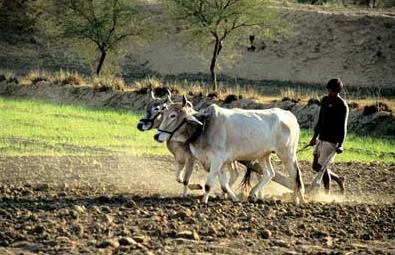Cultivation Theory
Cultivation theory (sometimes referred to as the cultivation hypothesis or cultivation analysis) was an approach developed by Professor George Gerbner, dean of the Annenberg School of Communications at the University of Pennsylvania. He began the 'Cultural Indicators' research project in the mid-1960s, to study whether and how watching television may influence viewers' ideas of what the everyday world is like. Cultivation research is in the 'effects' tradition. Cultivation theorists argue that television has long-term effects which are small, gradual, indirect but cumulative and significant.
They emphasize the effects of television viewing on the attitudes rather than the behaviour of viewers. Heavy watching of television is seen as ‘cultivating’ attitudes which are more consistent with the world of television programmes than with the everyday world. Watching television may tend to induce a general mindset about violence in the world, quite apart from any effects it might have in inducing violent behaviour. Cultivation theorists distinguish between ‘first order’ effects (general beliefs about the everyday world, such as about the prevalence of violence) and ‘second order’ effects (specific attitudes, such as to law and order or to personal safety).
Gerbner argues that the mass media cultivate attitudes and values which are already present in a culture: the media maintain and propagate these values amongst members of a culture, thus binding it together. He has argued that television tends to cultivate middle-of-the- road political perspectives. And Gross considered that 'television is a cultural arm of the established industrial order and as such serves primarily to maintain, stabilize and reinforce rather than to alter, threaten or weaken conventional beliefs and behaviours' (1977, in Boyd- Barrett & Braham 1987, p. 100). Such a function is conservative, but heavy viewers tend to regard themselves as 'moderate'.
General Greenhouse Management
Greenhouse Construction
Climate Control in GH Structures
Greenhouse Management: Soil Sterilization and preparation, cultural practices in flower and vegetable cultivation
Irrigation and Fertigation Technology
Crop Protection
Post Harvest and Marketing
Ergonomics
Marketing of Horticultural Produce
Importance and Scope
Post-Harvest and Handling
Marketing Channels
Domestic & Export Marketing : Potential Markets & Procedures
Logistics and Planning
Marketing of Allied Products
FUNDING SCHEMES
Bank of Maharashtra
Minor Irrigation for Agriculturists scheme for purchase of various irrigation equipments.
Mahabank Kisan Credit Card scheme for cultivation of crops, meeting the short-term credit needs of farmers.
Farm Mechanisation for Agriculturists scheme for Purchase of Tractors/Power tillers, Harvesters, Threshers & other farm
implements.
Animal Husbandry scheme for Purchase of animals, Poultry- Broiler Farm, Layers Farm, Hatchery Sheep/Goat Rearing Construction
of Byre, and Purchase of Machinery Working Capital Requirements under
Scheme for Cultivation of fruit crops-mango, Pomegranate, Grapes etc.
Scheme for providing finance to set up of Agri-Clinics/Agribusiness Centers.
Scheme for Financing Farmers for Purchase of Agricultural land.
Scheme for Financing Two Wheelers to Farmers
Scheme for Providing Loans to Farmers for Purchase of consumer durables
Scheme for Hi-tech projects in agriculture.
Rural Godown Scheme (Gramin Bhandaran Yojana) for scientific storage of agricultural produce.
Minor Irrigation for Agriculturists
Purpose :
Digging of new wells, revitalization of existing well, purchase of oil engine, electric motor, pump set installation of pipe line, sprinkler, irrigation, drip irrigation, tube well, bore well, etc.
Eligibility : Agriculturist who owns agricultural land.
Amount : For new dug wells as per the NABARD Unit costs for equipments/estimates.
Repayment : Depending upon the repaying capacity 7 to 11 years.
Security : Mortgage of land, Hypothecation of movable assets and guarantors.
Other Terms & Conditions :
Proposed well should be located in white watershed area. It should not be in dark watershed area.

